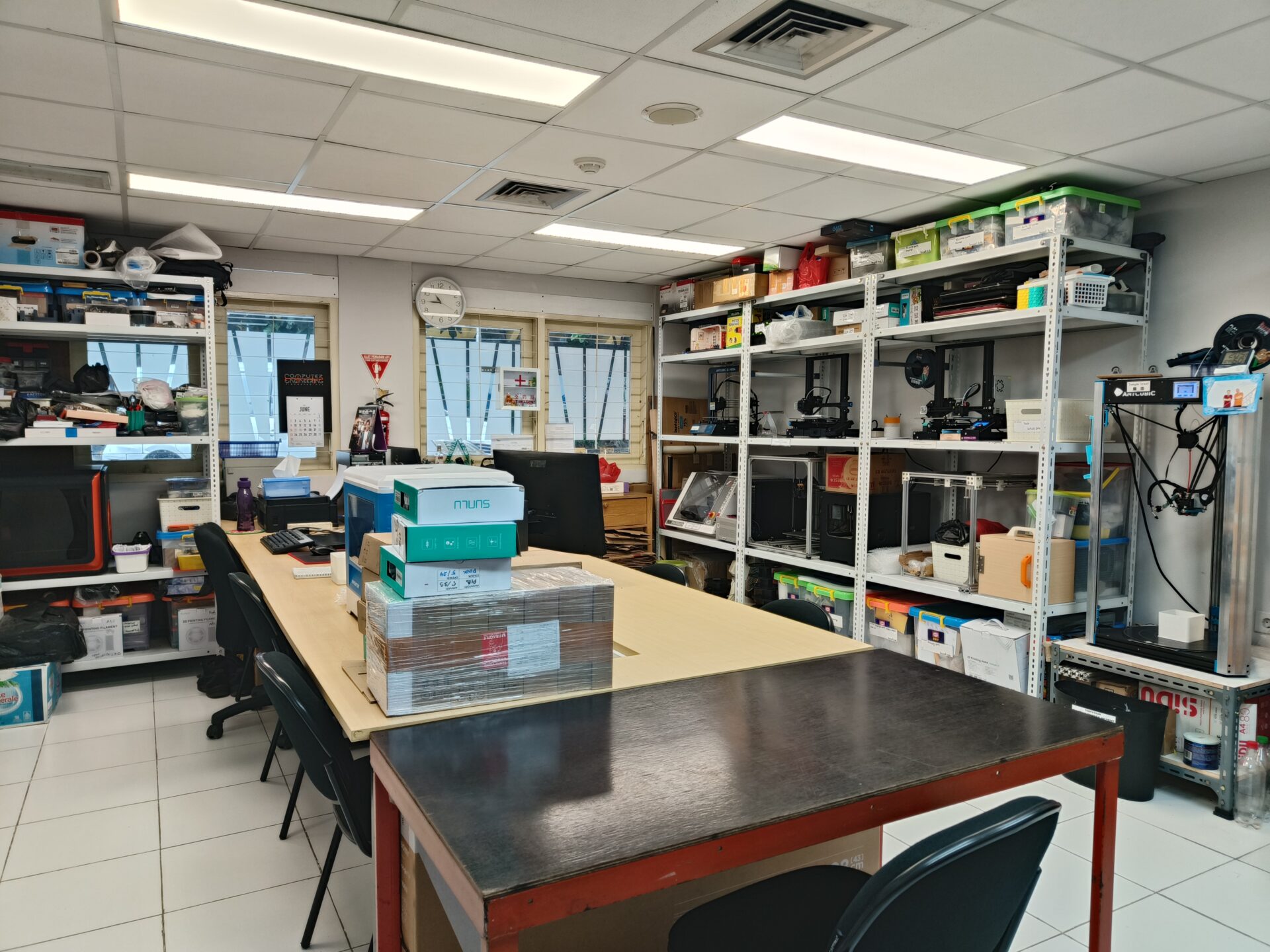HD05 – Robotics Laboratory

Introducing HD05 room
In the field of technological advancement, Binus University stands as a beacon of innovation and creativity. Among the various facilities dedicated to developing intelligence, room HD05 emerges as a dynamic center where students turn their ideas into tangible reality. In-room HD05, students embark on a creative journey, utilizing state-of-the-art equipment and under the guidance of experienced mentors such as Rudy Susanto, S.Kom., M.T.I.
HD05 Overview
HD05 is a heavenly space for students interested in exploring the field of digital fabrication and design. Equipped with state-of-the-art 3D printers and a host of design software called Fusion 360, the facility offers a conducive environment for students to unleash their creativity and hone their technical skills.
Hands-On Experience
HD05 is one of excellence in its emphasis on experiential learning. In-room HD05, many students engage in practical exercises aimed at improving their proficiency in various aspects of design and manufacturing. An important feature of HD05 is the availability of multiple 3D printers, allowing students to realize their designs with precision and efficiency. Whether it’s building a complex casing or conceptualizing an innovative 3D model, students have tools they can use to turn their ideas into reality. The tools they use in the HD05 room are 3D Printer Ender-3 using PLA material and 3D Printer using ABS material.
3D Printer Ender-3 using PLA material
Many students majoring in computer engineering use the Creality Ender-3 3D Printer tool which is usually used to create 3D designs in projects such as IoT Design and Applications lessons and Systems and Engineering Projects, likewise with research programs and thesis projects in the final semester. We are using the Creality Ender 3 because it is extremely good value for the money. It is a well-built, safe device that can produce good quality outputs with almost no effort. It benefits from quality-of-life features, including a power recovery function, a tight filament pathway, and a heated bed with a viscose surface sticker similar to the BuildTak one. Also, it offers a decent build volume of 220 x 220 x 250mm, which lets you easily print large parts in one go. The Creality Ender 3 prints well with a variety of filaments, including PLA, PETG, and ABS, but in HD05, we only use PLA material. Ender 3 prints have technical specifications and features
- Technical Specifications
- Technology: FDM (Fused Deposition Molding)
- Assembly: DIY Kit
- Frame: Aluminum
- Mechanical arrangement: Cartesian XZ-Head
- Layer height: 100 – 400 Microns
- print speed: 200 mm/s
- Print precision: +/- 100 microns
- Extruder type: Single
- Feeder system: Bowden
- Max extruder temperature: 491 °F / 255 °C
- Nozzle size: 0.4 mm
- Filament: 1.75mm – PLA, PETG, ABS, TPU
- Print bed: Magnetic, removable heated bed with viscose surface sticker
- Max hot bed temperature: 110°C
- Bed leveling: Manual
- Print area: 220 x 220 x 250mm
- Connectivity: SD card, USB
- Display: LCD screen
- Additional features: Print recovery
The Creality Ender-3 is an FDM 3D printer equipped with a Bowden feeder system that melts and extrudes thermoplastic filament through a heated single extruder. Compatible with 1.75mm filaments from various brands, its narrow extruder pathway facilitates flexible filament printing but may complicate filament insertion. Upgrading to an all-metal extruder or Direct Drive system enhances performance with flexible materials.
Utilizing X and Z axes for the print head’s movement and the Y-axis for bed movement, the Ender 3 deposits melted filament layer by layer, offering adjustable layer heights from 100 to 400 microns for different printing resolutions. With a maximum speed of 200mm/s, its aluminum construction ensures stability and reduces vibrations, while the 220 x 220 x 250mm build volume accommodates diverse printing needs. Featuring a heated aluminum bed with a BuildTak-like surface, the printer promotes strong adhesion, though upgrading to a glass or magnetic flexible bed enhances adhesion and reduces warping, commonly sought by Ender 3 users.
- Features
One standout feature of this printer is its affordable price tag, distinguishing it from competitors. Other notable features include its fully open-source system and print recovery function. The open-source system allows for easy modifications and upgrades, such as replacing components or adding accessories. For instance, users have customized their Ender 3 by upgrading cooling fans, integrating Raspberry Pi with Octoprint and a camera for remote monitoring, and switching to a Direct Drive kit.
With the right enhancements, this printer becomes a reliable tool capable of producing high-quality parts consistently. The print recovery function prevents print failures caused by power loss or disconnection. It saves printing progress immediately, enabling users to resume the job seamlessly at a later time, enhancing the value of this budget-friendly device.
Research and Project Development
Beyond its role as a mere fabrication facility, HD05 serves as a catalyst for research and academic exploration. In this dynamic environment, students delve into the realms of research programs and undertake ambitious projects as part of their academic journey. From exploring cutting-edge technologies addressing real-world challenges, HD05 provides students with the resources and mentorship necessary to thrive in their scholarly pursuits.
Course Offered
The lessons or projects that we use in the HD05 room are:
- IOT Design and Application
- System Project and Engineering
Location
Ground Floor, H Building, Bina Nusantara (BINUS) University Syahdan Campus.



